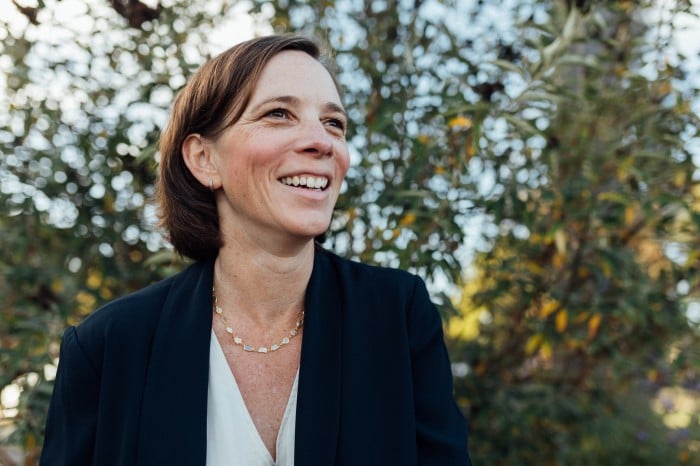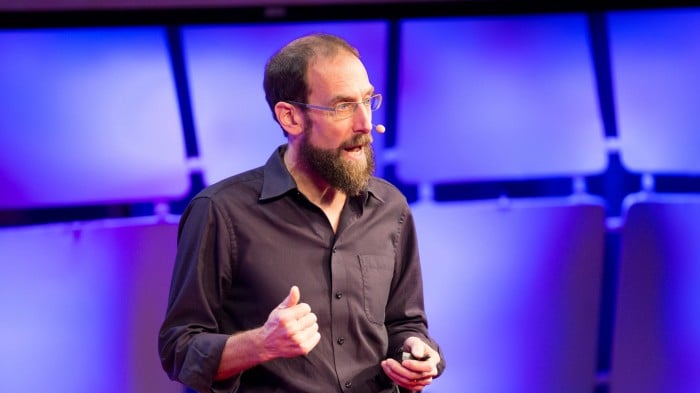Geoengineering is very controversial. How can you do experiments? Harvard has some ideas.

For years, several Harvard climate scientists have been preparing to launch a balloon capable of spraying reflective particles into the atmosphere, in the hopes of learning more about our ability to counteract global warming. (See “Harvard scientists moving ahead on plans for atmospheric geoengineering experiments.”)
A prestigious university forging ahead with an outdoor experiment is a major milestone for the field, known as geoengineering. But it’s fraught with controversy. Critics fear such a step will lend scientific legitimacy to the idea that we could turn the dial on Earth’s climate. And they fret that even doing experiments is starting down a slippery slope toward creating a tool of incredible power.
Despite the critics, Harvard will take a significant step forward on Monday, as the university announces the formation of a committee to ensure that researchers take appropriate steps to limit health and environmental risks, seek and incorporate outside input, and operate in a transparent manner.
It’s a move that could create a template for how geoengineering research is conducted going forward, and perhaps pave the way for more experiments to follow.
At least one reason Harvard had to take the unusual step of creating an advisory committee was that there isn’t a US-government-funded research program in this area, or any public oversight body set up to weigh the particularly complex questions surrounding such a proposal.
Louise Bedsworth, previously a climate advisor to former California governor Jerry Brown and executive director of the California Strategic Growth Council, will serve as chair of the committee.
“The Advisory Committee will develop and implement a framework to ensure that the SCoPEx project is conducted in a transparent, credible, and legitimate manner,” she said in a statement. “This will include establishing expectations and means to hear from multiple perspectives, voices, and stakeholders.”

Committee member Katharine Mach, director of the Stanford Environment Assessment Facility, said in an interview that the committee hopes to create a replicable model that other institutions or nations can employ to review additional research in this realm. She stressed that it’s early in the process, but they intend to go beyond a scientific review of environmental and safety risks, exploring broader questions such as whether pursuing research into such a technology could ease pressure to cut climate emissions.
Mach said the committee may ultimately recommend that the proposal be altered, delayed, or canceled, and her understanding is that the research team will treat such guidance with the “utmost seriousness” and “respond in a public way.”
But some think that by creating the committee, the university is rushing ahead of the public and political debate on this issue.
“It’s an extremely high-profile institution that’s decided they don’t want to wait for the regulatory regimes to greenlight this,” says Wil Burns, co-director of the Institute for Carbon Removal Law and Policy at American University.
From an engineering standpoint, the team could be ready for an initial test flight within about six months. The current plan is to launch from a site somewhere in New Mexico. The scientists, however, have said they won’t pursue the experiment until the committee completes its review and will heed a determination that they should stop.
The need for real-world observations
The basic idea behind what’s known as solar geoengineering is that we could use planes, balloons, or even very long hoses to disperse certain particles into the atmosphere, where they could reflect enough sunlight back into space to moderately cool the planet.
Most of the research to date has been conducted using software climate simulations or experiments in the lab. While the models show that the technique will lower temperatures, some have found it might unleash unintended environmental impacts, such as altering monsoon patterns and food production, depending on how it's done.
Only two known experiments that could be seen as related to solar geoengineering have been carried out in the open air to date. Researchers at the University of California, San Diego, sprayed smoke and salt particles off the coast of California in 2011, and scientists in Russia dispersed aerosols from a helicopter and car in 2009.
Plans for a proposed outdoor experiment in the United Kingdom, known as the SPICE project, were dropped in 2012, amid public criticism and conflict-of-interest accusations.
The Harvard experiment, first proposed in a 2014 paper, will launch a scientific balloon equipped with propellers and sensors around 20 kilometers (12 miles) above Earth. The aircraft would release between 100 grams and 2 kilograms of sub-micrometer-size particles of calcium carbonate, a substance naturally found in shells and limestone, in a roughly kilometer-long plume.
The balloon would then fly through the plume, enabling the sensors to measure things such as how broadly the particles disperse, how they interact with other compounds in the atmosphere, and how reflective they are.
The researchers hope these observations could help assess and refine climate simulations and otherwise inform the ongoing debate over the feasibility and risks of various approaches to geoengineering.
“If anything, I’m concerned that the current climate models make solar geoengineering look too good,” Frank Keutsch, a professor of chemistry and the project’s principal investigator, said in a statement. “If we want to be able to predict how large-scale geoengineering would disrupt the ozone layer, or the exchange of air between the troposphere and stratosphere, we need more real-world observations.”
The project is being funded through Harvard grants to the professors involved and the university’s Solar Geoengineering Research Program, a multidisciplinary effort to study feasibility, risks, ethics, and governance issues. The organization has raised more than $16 million from Microsoft cofounder Bill Gates, the Hewlett Foundation, the Alfred P. Sloan Foundation, and other philanthropic groups and individuals.
The researchers stress that the experiment doesn’t pose any significant health or environmental hazards and doesn’t constitute geoengineering itself, as the amount of material involved won’t be anywhere close to the level needed to measurably alter temperatures. Indeed, it would represent a fraction of the particles released in a standard commercial flight, and the materials would be so dilute once they reached the surface they wouldn’t be detectable, the scientists say.
Slippery slope
But there are concerns with the way the Harvard team is moving ahead.
“It doesn’t pose a physical risk, but it does pose a considerable social and political risk in being the first step towards development of actual technology for deployment,” Raymond Pierrehumbert, a physics professor at the University of Oxford, has said of the experiment. “There would be some limited scientific payback from such a small-scale experiment, but it is mostly a stunt to break the ice and get people used to the idea of field trials.”
Another question is whether the new committee is adequately independent, given Harvard’s involvement in the first step of the selection process. The university’s dean of engineering and vice provost for research created an external search committee, made up of three individuals from outside the university, to select the chair of the advisory panel. Bedsworth, in turn, chose the rest of the members.
A number of earlier research papers have argued for the creation of government-based advisory boards to oversee geoengineering research, similar to boards that national science bodies have created to weigh ethical and safety concerns around human genome editing or recombinant DNA technologies. Government-created committees help counter the self-selection issue and ensure that the body is at least indirectly accountable to the public.
To some, the fact that government bodies haven’t yet set up such a group, or provided research funds for geoengineering, may mean there isn’t a sufficient public or political consensus on moving ahead with experiments. “Private funding subverts all that, and the question is: Is that a good or bad thing?” says Jane Flegal, an adjunct faculty member at Arizona State University’s School for the Future of Innovation in Society.
The counterargument is that the US political system is effectively broken on the topic of global warming. The inability to raise public funds for research—or pass strict legislation, for that matter—has little to do with the merits of the science, or the importance of the issue, and everything to do with the poisoned politics of climate change, says Jane Long, a former associate director at Lawrence Livermore National Laboratory, who served on the search committee.
“We’re so dysfunctional from a political perspective,” says Long, who pushed early on for the researchers to create a governance board. “I don’t know how you can draw the conclusion that we’ve gotten a democratic signal that we shouldn’t do this research.”
The committee is made up of a mix of social scientists and legal and technical experts, including Michael Gerrard, a law professor at Columbia; Shuchi Talati, a fellow at the Union of Concerned Scientists; Robert Lempert, a principal researcher at RAND; and Raj Pandya, director of Thriving Earth Exchange.

But it doesn’t include any representatives of the public—say, from New Mexico, where the experiment is likely to occur—or, Burns notes, any outspoken geoengineering critics.
It’s also notable that everyone is based in the US. Flegal has previously criticized proponents of geoengineering research for failing to call on enough voices from developing nations, even as they argue that the tools could be especially important in helping to address the disproportionate impact of climate change on the global poor.
Harvard professor David Keith, one of the main figures behind the experiment, acknowledged that there are reasonable concerns about independence. But he said Harvard made a good-faith effort to create a committee several layers removed from the researchers. He adds that it’s not the only form of oversight, noting that the project will also have to pass muster with Harvard’s safety committee, Federal Aviation Administration regulations, and provisions of the National Environmental Policy Act.
Keith also questioned the assumption that public funding from a federal science body would trigger stricter oversight, noting that such proposals are generally evaluated for safety and environmental impact, not the intent of the research, which is the real issue complicating this experiment.
Risks of a backlash?
Douglas MacMartin, a senior research associate in mechanical and aerospace engineering at Cornell who focuses on geoengineering, believes the experiment could provide some important scientific information about the behavior and chemistry of calcium carbonate in the stratosphere. It may also help answer some basic questions about how hard or easy it will be to disperse a plume of particles and monitor their behavior.
But he says it isn’t obvious whether a project like this is the highest priority for a field with tightly limited funding.
In a paper published in Proceedings of the National Academy of Sciences earlier this year, he and a colleague noted that scientists have still barely scratched the surface of what we can learn from computer simulations. MacMartin says it would make sense to first focus on figuring out which of the uncertainties in existing models we most need to address to better understand geoengineering, and use those questions to determine the most important and achievable small-scale outdoor experiments.
He adds that moving too quickly into the real world could create the risk of a public backlash (see “How one climate scientist combats threats and misinformation from chemtrail conspiracists”). MacMartin says it’s important that Harvard is taking the governance questions seriously, but that waiting for a broader federal research program could also allay some of the concerns.
Keith agrees the field needs to do a lot more modeling work, but he argues it’s crucial to test simulations with direct observations. Otherwise you can make mistakes, build upon them, and wind up widely divorced from reality.
He adds it’s possible an experiment could create a backlash, but it’s also conceivable that it could encourage people to take global warming more seriously, and that it’s impossible to know at this stage. An earlier Yale study found that people exposed to information about geoengineering became more concerned about the dangers of climate change.
Ultimately, Keith says, it’s important to move the science forward, because there’s a real chance geoengineering could substantially reduce climate risks in the coming decades. So we’ll want to understand as clearly as possible what they can do, what their limits are, and what sorts of risks they could pose.
Deep Dive
Climate change and energy
The problem with plug-in hybrids? Their drivers.
Plug-in hybrids are often sold as a transition to EVs, but new data from Europe shows we’re still underestimating the emissions they produce.
Harvard has halted its long-planned atmospheric geoengineering experiment
The decision follows years of controversy and the departure of one of the program’s key researchers.
Why hydrogen is losing the race to power cleaner cars
Batteries are dominating zero-emissions vehicles, and the fuel has better uses elsewhere.
Decarbonizing production of energy is a quick win
Clean technologies, including carbon management platforms, enable the global energy industry to play a crucial role in the transition to net zero.
Stay connected
Get the latest updates from
MIT Technology Review
Discover special offers, top stories, upcoming events, and more.